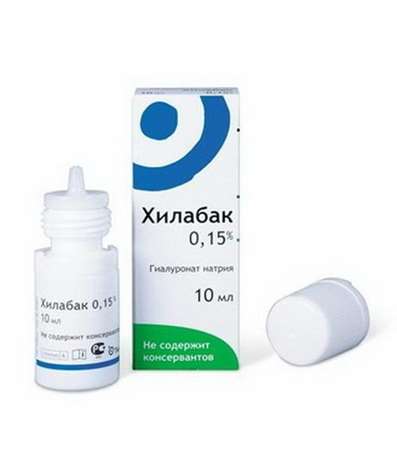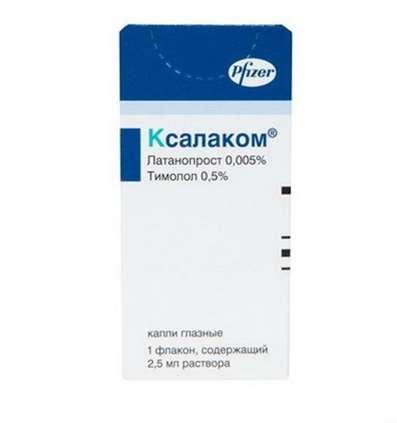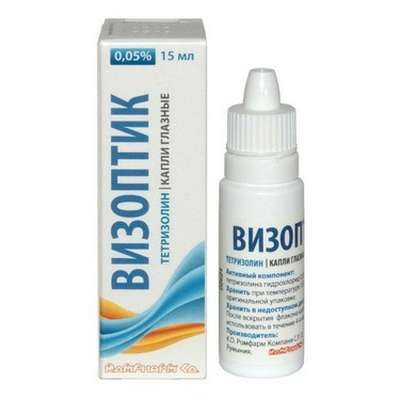Instruction for use: Betahistine
I want this, give me price
The Latin name of the substance Betahistine
Betahistinum (genus. Betahistini)
Chemical name
N-Methyl-2-pyridineethanamine (as dihydrochloride)
Gross formula
C8H12N2
Pharmacological groups:
Angioprotectors and microcirculatory correctors
Histaminomimetics
The nosological classification (ICD-10)
G45.0 Vertebrobasilar arterial system syndrome: Vertebral-basilar insufficiency; Syndrome of the vertebral artery; Benign positional dizziness; Benign positional dizziness after neurosurgical operations
G46 Vascular cerebral syndromes in cerebrovascular diseases: Postopoplexic state; Chronic cerebrovascular insufficiency
G93.4 Unspecified Encephalopathy: bilirubin encephalopathy; lacunarity status; Tremor when portal-systemic encephalopathy; The latent hepatic encephalopathy; Atherosclerotic encephalopathy; Hypertensive encephalopathy; hypoxic encephalopathy; dismetabolic encephalopathy; Encephalopathy; brain lesion; Porto-caval encephalopathy; Vascular encephalopathy; Traumatic encephalopathy; encephalopathy; encephalopathy; Encephalopathy secondary genesis; Encephalopathy discirculatory; Encephalopathy portocaval; epileptic encephalopathy; hemorrhagic shock and encephalopathy syndrome; Subacute spongiform encephalopathy
H81.0 Meniere's disease: Meniere's syndrome/ disease; Meniere's disease; Meniere's syndrome; Labyrinth dropsy; endolymphatic hydrops
H81.9 Unspecified Violation of vestibular function: Labyrinth, vestibular disorders; Labyrinth disorders; vestibular nystagmus; kohleovestibulyarny disorder; Kohleovestibulyarny syndrome vascular origin; Violation of the microcirculation in the maze; Ischemic disorders of hearing and balance
H83.9 Unspecified Disease of inner ear: Spasm of inner ear vessels; Disturbance of blood supply to the inner ear
H91 Other hearing loss: Age-related vascular hearing loss; Age-related vascular drop in hearing; Age-related hearing impairment; Idiopathic hearing loss; Decreased acuity of hearing; Hearing loss; Deteriorating hearing of vascular or toxic origin; Perceptual hearing loss
I67.2 Cerebral atherosclerosis: Atherosclerosis of the arteries of the brain; Atherosclerosis of cerebral vessels; Atherosclerotic changes in cerebral vessels; Vascular diseases of the brain; Sclerotic ischemic attacks; Sclerosis of cerebral vessels
I69 The effects of cerebrovascular disease: Ischemic and post-stroke condition; Residual effects of hemorrhagic stroke; Residual effects of ischemic stroke; Residual effects of cerebral circulation; Residual effects of subarachnoid hemorrhage; Ischemic stroke; Transferred thromboembolic stroke; The consequence of cerebrovascular accident; The consequence of insufficient blood supply to the brain; Consequences of ischemic stroke; The consequences of a stroke; Postapopleksicheskoe state; post-stroke period; post-stroke syndrome; Condition after stroke; Condition after cerebrovascular accidents; Chronic cerebrovascular insufficiency
T90.5 Effects of intracranial injury: Condition after traumatic brain injury; Conditions after traumatic brain injury; Traumatic encephalopathy; Residual effects of traumatic brain injury; Recovery after traumatic brain injury; Conditions after traumatic brain injury
Z100 * CLASS XXII Surgical practice: Abdominal surgery; adenomectomy; Amputation; Coronary angioplasty; Angioplasty of the carotid arteries; Antiseptic skin treatment for wounds; Antiseptic Hand; Appendectomy; atherectomy; Balloon coronary angioplasty; Vaginal hysterectomy; The coronary bypass; Interventions in the vagina and cervix; Interventions on the bladder; Intervention in the mouth; Restoration and reconstructive surgery; Hand hygiene of medical personnel; Gynecologic surgery; Gynecological intervention; Gynecological surgery; Hypovolemic shock during operations; Disinfection of purulent wounds; Disinfection of wounds edges; Diagnostic intervention; Diagnostic procedures; Cervical Diathermocoagulation; Long-surgery; Replacing the fistula catheters; Infection in orthopedic surgery; Artificial heart valve; cystectomy; Short-term outpatient surgery; Short-term operation; Short surgical procedures; Krikotireotomiya; Blood loss during surgery; Bleeding during surgery and in the postoperative period; Kuldotsentez; laser photocoagulation; laser coagulation; retinal laser coagulation; Laparoscopy; Laparoscopy in Gynecology; CSF fistula; Small gynecological operations; Small surgical procedures; Mastectomy and subsequent plastic; mediastinotomy; Microsurgical operations on the ear; Mukogingivalnye operation; suturing; Minor surgery; neurosurgical operation; Immobilization of the eyeball in ophthalmic surgery; testectomy; pancreatectomy; Perikardektomiya; The period of rehabilitation after surgery; The period of convalescence after surgery; Percutaneous transluminal coronary angioplasty; Pleural thoracentesis; Pneumonia postoperative and posttraumatic; Preparation for surgical procedures; Preparation for surgery; Preparation of the surgeon's hands before surgery; Preparation of the colon for surgical procedures; Postoperative aspiration pneumonia in neurosurgical and thoracic surgery; Postoperative nausea; Postoperative bleeding; postoperative granuloma; postoperative shock; The early postoperative period; myocardial revascularization; Radiectomy; gastric Resection; bowel resection; uterine Resection; liver Resection; enterectomy; Resection of part of the stomach; Reocclusion of the operated vessel; Bonding tissues during surgical procedures; Removal of sutures; Condition after eye surgery; Condition after surgery; Condition after surgery in the nasal cavity; Condition after gastrectomy; Status after resection of the small intestine; Condition after tonsillectomy; Condition after removal of the duodenum; Condition after phlebectomy; Vascular surgery; Splenectomy; Sterilization of surgical instruments; Sterilization of surgical instruments; sternotomy; Dental surgery; Dental intervention in periodontal tissues; strumectomy; Tonsillectomy; Thoracic surgery; Thoracic surgery; total gastrectomy; Transdermal intravascular coronary angioplasty; Transurethral resection; Turbinektomiya; Removal of a tooth; cataract surgery; Removal of cysts; tonsillectomy; Removal of fibroids; Removing the mobile primary teeth; Removing polyps; Removing broken tooth; Removal of the uterus body; Removal of sutures; Fistula likvoroprovodyaschih ways; Frontoetmoidogaymorotomiya; Surgical infection; Surgical treatment of chronic limb ulcers; Surgery; The surgery in the anal area; The surgery on the colon; Surgical practice; The surgical procedure; Surgical interventions; Surgery on the gastrointestinal tract; Surgical procedures on the urinary tract; Surgical procedures on the urinary system; Surgical intervention of the genitourinary system; Surgical procedures on the heart; Surgical manipulation; surgery; Surgery on the veins; Surgical intervention; Vascular surgery; Surgical treatment of thrombosis; Surgery; cholecystectomy; Partial gastric resection; hysterectomy; Percutaneous transluminal coronary angioplasty; Percutaneous transluminal angioplasty; Coronary artery bypass; tooth Extirpation; Extirpation of milk teeth; pulpectomy; pulsative cardiopulmonary bypass; tooth Extraction; teeth Extraction; cataract extraction; Electrocoagulation; endourological intervention; episiotomy; Etmoidotomiya; Complications after tooth extraction
CAS Code
5638-76-6
Pharmacology
Mode action - Improving microcirculation, histamine-like.
Disintegration, blocking of endogenous histamine and normalises neuronal transmission in neurons polysynaptic lateral vestibular nuclei nerve at the level of the bridge the brain stem, inhibit diamine oxidase acts on precapillary sphincters, precapillary increases blood flow.
Quickly and completely absorbed from the digestive tract. Cmax is reached by the third hour. Binding to plasma proteins is low. Passes histohematological barriers and penetrates into tissues. It is subjected to biotransformation: most of it is converted to 2-pyridyl-acetic acid. Virtually completely excreted in the urine within 24 hours.
It affects mainly the histamine H1 and H3 receptors of the inner ear and vestibular nuclei of the central nervous system. Improves microcirculation and permeability of the inner ear capillaries, increases blood flow in the basilar arteries, normalizes endolymph pressure in the labyrinth and the cochlea. Reduces the frequency and intensity of dizziness, reduces tinnitus, improves hearing in the event of a decrease in it. The relief of acute vestibular disorders is achieved during the first day, a persistent clinical effect - after several months of therapy.
Application of substance Betahistine
Disease and Meniere's syndrome (including tinnitus and hearing loss), vestibular vertigo various genesis (vertebrobasilar insufficiency, traumatic encephalopathy, cerebral atherosclerosis, vestibular neuritis, labyrinthitis, benign positional vertigo after neurosurgical operations).
Contraindications
Hypersensitivity, peptic ulcer in an active phase, bronchial asthma, pheochromocytoma, pregnancy (I term), childhood.
Restrictions on the use
Peptic ulcer of the gastrointestinal tract (in the anamnesis), pregnancy (II and III trimester), breastfeeding.
Application in pregnancy and lactation
The FDA action category for fetus is not defined.
Side effects of substance Betahistine
Gastrointestinal disorders (nausea, vomiting, a feeling of heaviness in the epigastrium et al.), Headache, allergic reactions (rash, pruritus, etc.).
Interaction
Effectiveness reduces antihistamines.
Overdose
Symptoms: headache, hyperemia of the face, dizziness, tachycardia.
Treatment: symptomatic.
Routes of administration
Inside.
Precautions for the substance Betahistine
Care should be taken when treating patients with gastrointestinal ulcer (including in history).

 Cart
Cart





